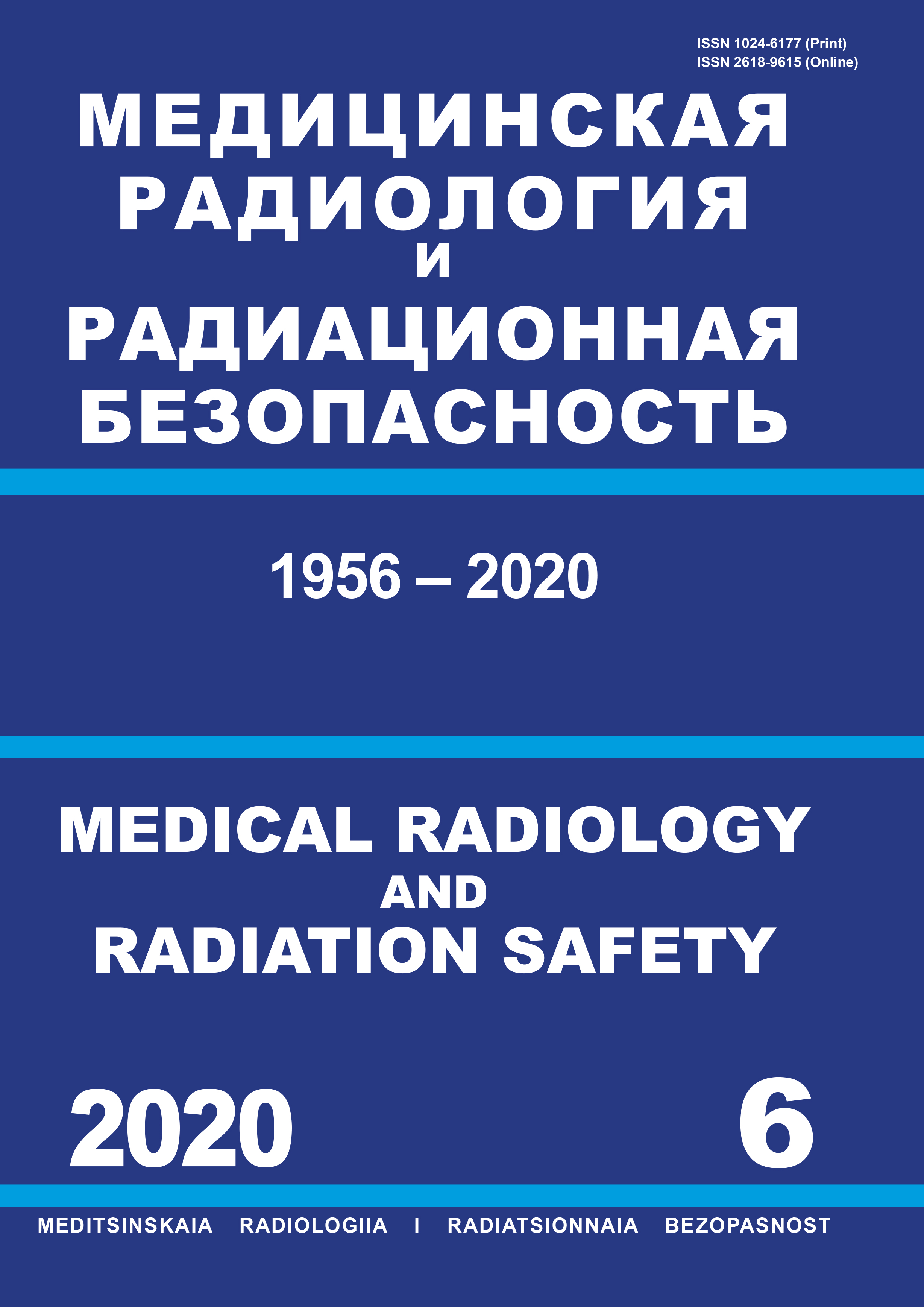Russian Federation
Russian Federation
Purpose: To consider the issues of physical-mechanical decontamination of contaminated territories, environmental objects and infrastructure of settlements during a radiation accident and to develop a mathematical tool for evaluating forces and means during physical-mechanical decontamination. Materials and methods: Analyzed possible contamination of territories and facilities with radioactive materials during the accident at the Chernobyl nuclear power plant (NPP) and the Japanese Fukushima Daiichi NPP, the methods used for decontamination and technical means, and the effectiveness of their use. The experience in dealing with the consequences of large scale radiation accidents at NPP, including the Chernobyl and Fukushima Daiichi NPPs, shows that the decontamination of contaminated territories and settlements is a very time-consuming and costly undertaking, which is carried out to resume economic activity on large contaminated areas. To carry out such work, it is required to evaluate the needful amount of various sets of technical equipment involved, as well as the involvement of numerous organizations with their specialists and personnel. Results: The issues of physical-mechanical decontamination of roads and sections of the terrain, forest land, soil, buildings and structures and technical equipment are considered. The mathematical tool for evaluation the forces and means involved in decontamination measures is given. The developed methodological approaches can be used to assess the necessary forces and means, responding to emergency incidents of a different nature: in responding spills of oil and its products, disinfection of various objects and in other emergency situations. Conclusion: The developed calculation tool allows evaluate the forces and means necessary for decontamination in a contaminated area.
radiation accident, decontamination, environment, forces and means, radionuclides, decontamination objects
1. Balonov MI, Golikov VYu, Parhomenko VI, Ponomarev AV. Dezaktivaciya naselennyh punktov Bryanskoy oblasti posle avarii na Chernobyl'skoy AES. Radiacionnaya gigiena. 2014;7(1):5-15. [Balonov MI, Golikov VYu, Parkhomenko VI, Ponomarev AV. Decontamination of Localities in the Bryansk Region after the Chernobyl Accident. Radiatsionnaya Gygiena = Radiation Hygiene. 2014;7(1):5-15. (In Russ.)]
2. Zimon AD, Pikalov VK. Dezaktivaciya. M.: Atomizdat. 1994. 336s. [Zimon AD, Pikalov VK. Decontamination. Moscow: Atomizdat. 1994.336p. (In Russ.)]
3. .Rukovodstvo po obespecheniyu radiacionnoy bezopasnosti pri lokalizacii i likvidacii radiacionnyh avariy i katastrof na ob'ektah Rossii. MChS Rossii. 1997.220s. [ Manual of Ensuring Radiation Safety during the Localization and Elimination of Radiation Accidents and Catastrophes at Russian Facilities. Moscow. EMERCOM of Russia. 1997.220p.]
4. .Tcherkezian V, Galushkin B, Goryachenkova T, Kashkarov L, Liul A, Roschina I, Rumiantsev O. Forms of contamination of the environment by radionuclides after the Tomsk accident (Russia, 1993). Journal of Environmental Radioactivity. 1995; 27(2):133-139. DOIhttps://doi.org/10.1016/0265-931x(95)00014-2
5. Preparedness and Response for a Nuclear or Radiological Emergency. General Safety Requirements No. GSR Part 7. Vienna: IAEA.2015.102 p.
6. Galushkin BA, Bogdanova LS. Sovremennoe sostoyanie normirovaniya dozy oblucheniya lic, privlekaemyh k likvidacii radiacionnyh avariy. Tehnologii grazhdanskoy bezopasnosti. 2019. 16. 1 (59). 84-91. [Galushkin B, Bogdanova L. Current Regulations on Radiation Exposure of First Responders to a Radiological Accident. Civil Safety Technologies. 2019;16.1(59).84-91.(In Russ.)]
7. Radiation Protection and Safety of Radiation Sources: International Basic Safety Standards. General Safety Requirements No. GSR Part 3. Vienna: International Atomic Energy Agency. 2014. 471p.
8. Gorbunov SV. Lokalizaciya radioaktivnogo zagryazneniya v usloviyah avarii na atomnoy stancii. Himki: Akademiya Grazhdanskoy Zaschity MChS Rossii. 2007. 135s. [Gorbunov SV. Localization of Radioactive Contamination during the Accident at a Nuclear Power Plant. Khimki. Academy of Civil Protection EMERCOM of Russia. 2007.135 p]
9. Gorbunov SV, Galushkin BA. Osobennosti obrascheniya s radioaktivnymi othodami, voznikayuschimi pri likvidacii posledstviy radiacionnyh avariy. Yadernye izmeritel'no-informacionnye tehnologii. Moskva. Izdatel'skiy dom "Tehnologii" 2003. 4(8). [Gorbunov SV., Galushkin BA. Features of the Management of Radioactive Waste, Arising from the Elimination of the Radiation Accidents Consequences. Nuclear measuring - information technologies. Moscow. Publishing House "Technologies" .2003. 4(8)]
10. Beresneva EV, Gorbunov SV. Prognozirovanie radiacionnoy obstanovki pri lesnyh pozharah v zonah radioaktivnogo zagryazneniya. Nauchnye i obrazovatel'nye problemy grazhdanskoy zaschity. Himki: Akademiya Grazhdanskoy Zaschity MChS Rossii. 2016. 3(30).76-80. [Beresneva EV., Gorbunov SV. The Method of Forecasting the Radiation Situation under Fire Forest in Radioactively Contaminated Areas. Scientific and Educational Problems of Civil Protection. Khimki. Academy of Civil Protection EMERCOM of Russia. 2016. 3(30).76-80 p]
11. Beresneva EV, Galushkin BA, Gorbunov SV, Klochkov VN, Rubcov VI, Molokanov AA. Imitacionnyy podhod pri prognozirovanii radiacionnoy obstanovki v sluchae lesnyh pozharov v zonah radioaktivnogo zagryazneniya. Medicinskaya radiologiya i radiacionnaya bezopasnost'. 2018. 63. (6) 21-26 c. [Beresneva EV, Galushkin BA, Gorbunov SV, Klochkov VN, Rubtsov VI, Molokanov AA. Simulation Approach in Forecasting Radioactive Situation in Case of Forest Fires in Radioactive Contaminated Zones. Medical Radiology and Radiation Safety. 2018;63(6):21-26. (in Russ). DOI:https://doi.org/10.12737/article_5c0c1209d926d4.00249293]
12. The Fukushima Daiichi Accident, Report by the Director General. IAEA. Vienna: 2015. 208 p.
13. The Fukushima Daiichi Accident, Technical Volume 5/5, Post-accident Recovery. IAEA. Vienna: 2015. R. 250 p.
14. Japan Atomic Energy Agency, Remediation of Contaminated Areas in the Aftermath of the Accident at the Fukushima Daiichi Nuclear Power Station: Overview, Analysis and Lessons Learned, Part 1: A Report on the “Decontamination Pilot Project”, JAEA-Review 2014-051, JAEA, Tokyo (2015).
15. Hardie S, Mckinley I. Fukushima remediation: Status and overview of future plans. Journal of Environmental Radioactivity. September 2013. DOI:https://doi.org/10.1016/j.jenvrad.2013.08.002 Source: PubMed.





